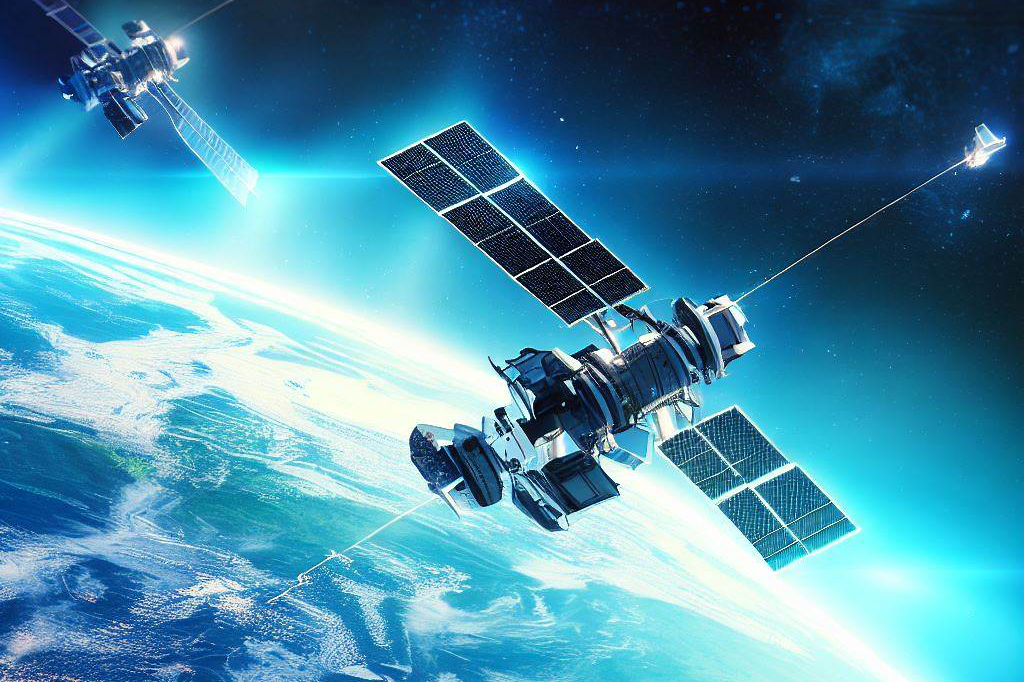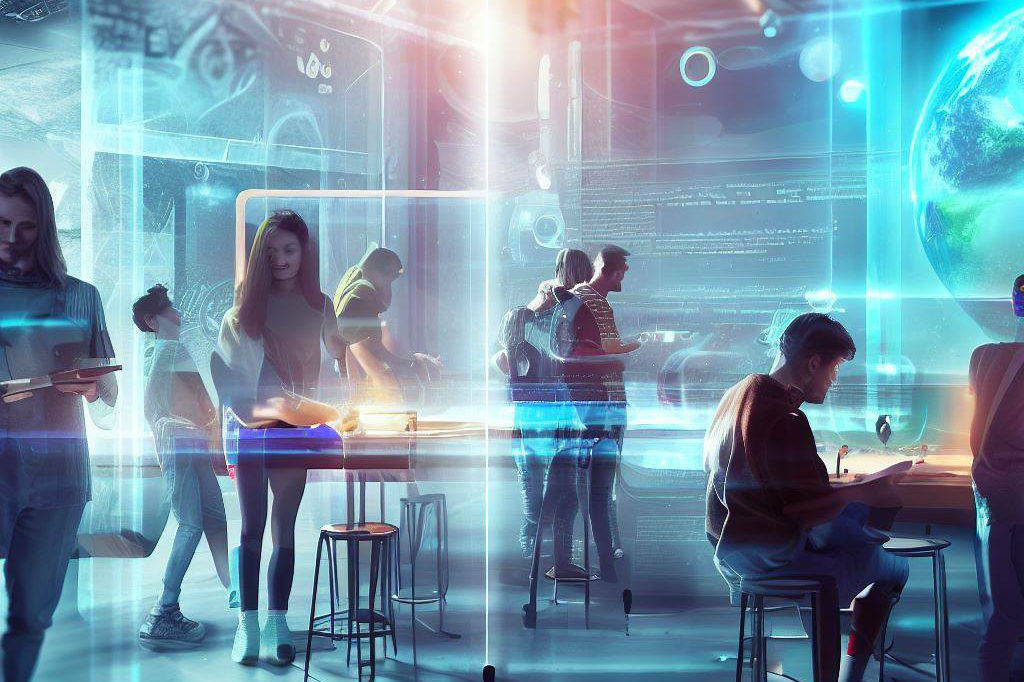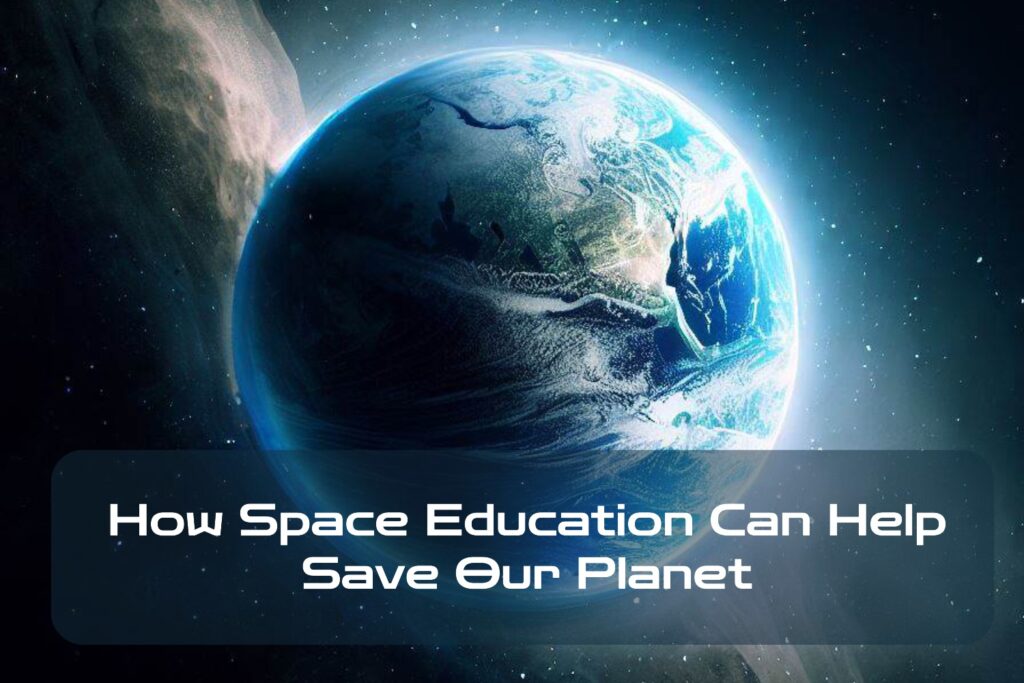The Final Frontier of Sustainability: How Space Education Can Help Save Our Planet
Our planet is facing a significant environmental crisis. Climate change, deforestation, pollution, and the loss of biodiversity have been threatening the natural systems that support life on Earth. The need for environmental awareness and sustainability has never been more critical than it is today.
Educating people on how to become environmentally conscious citizens is one key solution to this problem. One way to promote environmental awareness and sustainability among young people is through space education.
Space education refers to the study of astronomy, space exploration, and related fields that deal with learning about the universe beyond our planet’s atmosphere. This type of education provides students with a unique perspective on Earth’s environment and the effects of human activities on our planet.
Space education can contribute significantly to promoting environmental awareness by creating a sense of wonder about Earth’s environment in students. When they learn about our planet from a broader perspective, they can see how delicate and interconnected it is with everything around it.
They understand that humans are not separate from nature but part of it, so we must take care of our planet if we want to continue living on it. Moreover, space education can be an essential tool in promoting sustainability by inspiring young people to use technology for good purposes, such as protecting our planet from harm, instead of further damaging it through harmful practices like overconsumption or wastefulness.
With space technology advancing rapidly over time, we have more tools at our disposal than ever before for monitoring climate change and other environmental concerns affecting us today. This knowledge can help us make informed decisions about how best to protect the environment while still enjoying its resources sustainably.
Space Education and Environmental Awareness

The Power of Space Education
Space education is a powerful tool that can be used to raise awareness about environmental issues. The human exploration of space has shown us the beauty and fragility of our planet, giving us a new perspective on our place in the universe.
The images of Earth taken from space have been particularly effective in conveying the importance of protecting our planet. One example is the “Blue Marble” photograph taken by Apollo 17 astronauts in 1972, which showed Earth as a small, fragile looking sphere suspended in space.
This picture had a profound effect on public consciousness and helped catalyze the environmental movement. Space education has continued to inspire people with awe-inspiring images like these, encouraging them to take action in support of environmental causes.
Examples of Space Missions that Influenced Environmental Awareness
Space missions have been instrumental in advancing our understanding of Earth’s environment. In 1984, NASA launched its first environmental research satellite, Landsat 5, which was designed to monitor changes on Earth’s surface over time. Since then, numerous other satellites and spacecraft have been sent into orbit to collect data about the atmosphere, oceans, and land masses.
One of the most significant space missions was the Cloud-Aerosol Lidar and Infrared Pathfinder Satellite Observation (CALIPSO) mission, launched by NASA in 2006. The spacecraft used lidar technology to measure cloud cover and aerosol concentrations in Earth’s atmosphere.
This groundbreaking data helped scientists better understand how atmospheric pollution affects climate change. Another mission worth mentioning is the Gravity Recovery And Climate Experiment (GRACE), which was launched jointly by NASA and Germany’s Aerospace Agency (DLR) in 2002.
GRACE mapped variations in Earth’s gravity caused by changes in water distribution around the globe, such as melting ice caps due to climate change or water being sucked from underground aquifers. This data has allowed scientists to better understand the effects of climate change on Earth’s water resources, informing policy decisions.
Space education can be a powerful tool for raising awareness about environmental issues. By giving us a new perspective on our planet, space missions and technology have helped us better understand Earth’s environment and the impact of human activities upon it.
Space Technology for Sustainability

Space technology has been a game-changer in our ability to monitor, observe, and understand the Earth’s environment. Satellites provide us with an unprecedented view of our planet that allows us to see things we could not before, providing a wealth of data that can be analyzed to help protect the environment.
Satellite data for monitoring climate change
Satellites are used for monitoring climate change by measuring various aspects such as surface temperature, sea level rise, and ice coverage changes. The data collected is used to determine the impact of climate change on different regions of the world and to develop strategies to mitigate its impact. This information helps policymakers make informed decisions about how best to address this complex issue.
The satellite data also plays an important role in tracking weather patterns and extreme weather events that are becoming more frequent due to climate change. This information is critical for disaster management agencies, which rely on up-to-date information in real-time during emergency situations.
Satellite data for monitoring deforestation
Deforestation is another major environmental concern that threatens biodiversity and contributes significantly to greenhouse gas emissions. Satellites equipped with high-resolution cameras can detect changes in forest cover over time, allowing scientists to track deforestation rates more accurately. The satellite data also helps monitor illegal logging activities and informs authorities about areas where strict enforcement measures must be implemented since they are vulnerable or experiencing significant impacts due to human activities such as mining or encroachment.
Satellite data for other environmental concerns
In addition to deforestation and climate change, satellites have wide applications in keeping tabs on other issues such as ocean health, air quality monitoring over urban areas, and tracking natural disasters like wildfires or floods amongst others – which all impact human health directly or indirectly. By collecting data on these and other environmental concerns, satellite technology provides valuable insights that can help guide policies and decision-making processes in the future.
Overall, space technology has provided us with a unique vantage point to observe and understand our planet. With the wealth of data it provides us about our environment, we can make informed decisions to promote sustainability for future generations.
Space Exploration and Planetary Protection
The Importance of Planetary Protection in Space Exploration
When we think of planetary protection, we usually think about protecting other planets from contamination by our own microbes. This is a critical issue for space exploration, since any life forms we encounter could be fragile and easily destroyed by Earth-based bacteria or viruses brought along on a spacecraft.
So we must take great care to avoid contaminating other worlds with our own germs. But the concept of planetary protection can also be applied to protecting Earth’s environment as well.
Just as we need to protect other planets from contamination, so too must we protect our own planet from harmful substances that could degrade our environment and cause lasting harm to ecosystems. We need to think carefully about the impact of human activity on the planet, and take steps to preserve its natural state for future generations.
Applying Planetary Protection Principles on Earth

So how can we apply planetary protection principles here on Earth? One way is by reducing pollution and waste, which can have a devastating impact on local environments.
For example, plastic waste in the oceans harms marine life and damages fragile ecosystems. By reducing consumption of single-use plastics and properly disposing of waste, we can help protect these environments.
Another way is by promoting sustainable practices that help us live in harmony with nature rather than exploiting it for short-term gain. This could include things like using renewable energy sources instead of fossil fuels or engaging in conservation efforts to protect endangered species.
By taking these steps, we can help protect not only our own planet but also other worlds that may support life beyond Earth. By working together as responsible global citizens, we can ensure a sustainable future for ourselves and future generations.
The Role of Education in Promoting Sustainability

Importance of education in promoting sustainable practices
Education is often considered to be the key to solving a lot of the world’s problems, and this is especially true when it comes to sustainability. By teaching people about sustainable practices, we can encourage them to adopt sustainable lifestyles and thereby help protect our planet.
Sustainability education can take many forms, from formal classroom lessons to hands-on workshops and outdoor learning experiences. The goal is always the same: to help people understand the impact of their actions on our planet and inspire them to make positive changes.
At its core, sustainability education is about ensuring that future generations have access to the same natural resources as we do today. By promoting awareness and understanding of environmental issues, we can help create a better world for ourselves and for those who come after us.
How space education can inspire young people to become environmentally conscious citizens
Space exploration has long captivated young minds with its sense of adventure and possibility. But beyond feeding our curiosity about what lies beyond Earth’s atmosphere, space education can also serve as a powerful tool for inspiring young people to become environmentally conscious citizens. By learning about space technology such as satellites that are used for monitoring Earth’s environment from above, students gain an appreciation for how interconnected everything on our planet really is.
They come away with a sense of responsibility for stewardship over their home planet. Perhaps even more importantly, space exploration provides us with concrete examples of how human ingenuity and creativity can be harnessed in service of something greater than ourselves.
The obstacles that must be overcome in order to explore space are daunting, but through persistence and dedication, we have managed some incredible feats. This serves as an inspiration for young people looking for ways they too can make a difference in protecting our planet.
A Vision For A Sustainable Future
Perhaps the most exciting aspect of sustainability education is the vision it offers for a better world. By learning about sustainable practices and technologies, students can see a path forward to a future in which we live in harmony with our planet rather than exploiting it. This vision of a sustainable future is not just an idealistic dream.
It is something that everyday people can work towards by making small changes in their own lives and advocating for larger systemic changes. And by giving young people the tools and knowledge they need to be environmentally conscious citizens, we are helping ensure that this vision becomes a reality.
In a Nutshell..

After examining the various ways in which space education can promote environmental awareness and sustainability, it is clear that this field has a significant role to play in shaping our planet’s future. Through space missions, satellite technology, and planetary protection practices, we can gain a greater understanding of Earth’s environment and take steps towards protecting it. Space education has the potential to inspire young people to become environmentally conscious citizens.
By showcasing the incredible beauty and fragility of our planet from outer space, we can encourage them to think critically about the impact their actions have on the environment. Additionally, by demonstrating how space technology is being used for sustainable development on Earth, we can show them that we have the ability and responsibility to make positive changes.
As we face pressing environmental concerns such as climate change and deforestation, it is more important than ever that we promote environmental awareness and encourage sustainable practices. Space education offers an innovative approach towards achieving these goals.
By exploring beyond our own planet’s boundaries, we can gain new perspectives on our place in the universe and develop a deeper appreciation for our home planet. Ultimately, by incorporating these lessons into our daily lives and policies, we can work towards creating a better future for ourselves and generations to come.
TL;DR – FAQs
– 🚀 Space education can contribute significantly to promoting environmental awareness and sustainability.
– 🌍 Space education provides students with a unique perspective on Earth’s environment and the effects of human activities.
– 🌱 Space education creates a sense of wonder about Earth’s environment and promotes a sense of responsibility towards its protection.
– 💡 Space education inspires young people to use technology for good purposes, such as protecting the environment.
– 📡 Space technology allows for better monitoring of climate change and other environmental concerns.
– 🛰 Satellites play a crucial role in monitoring climate change, deforestation, and other environmental issues.
– ♻️ Applying planetary protection principles on Earth helps in preserving the natural state of the environment.
– 🌍 Education plays a key role in promoting sustainable practices and inspiring positive changes.
– 🌌 Space education can inspire young people to become environmentally conscious citizens and work towards a sustainable future.

C M, a seasoned editor, journalist, and consultant, is deeply fascinated by the convergence of technology, space, and the future of humanity.
With a particular interest in transhumanity, futurology, and the philosophical and ethical dimensions of these domains, C M serves as the lead contributor to SpaceSpotlight and TranscendSphere.
When not penning insightful articles on these rapidly evolving fields, C M indulges in their love for podcasts and books, proudly embracing their status as a ‘Happy Nerd Extraordinaire!’



